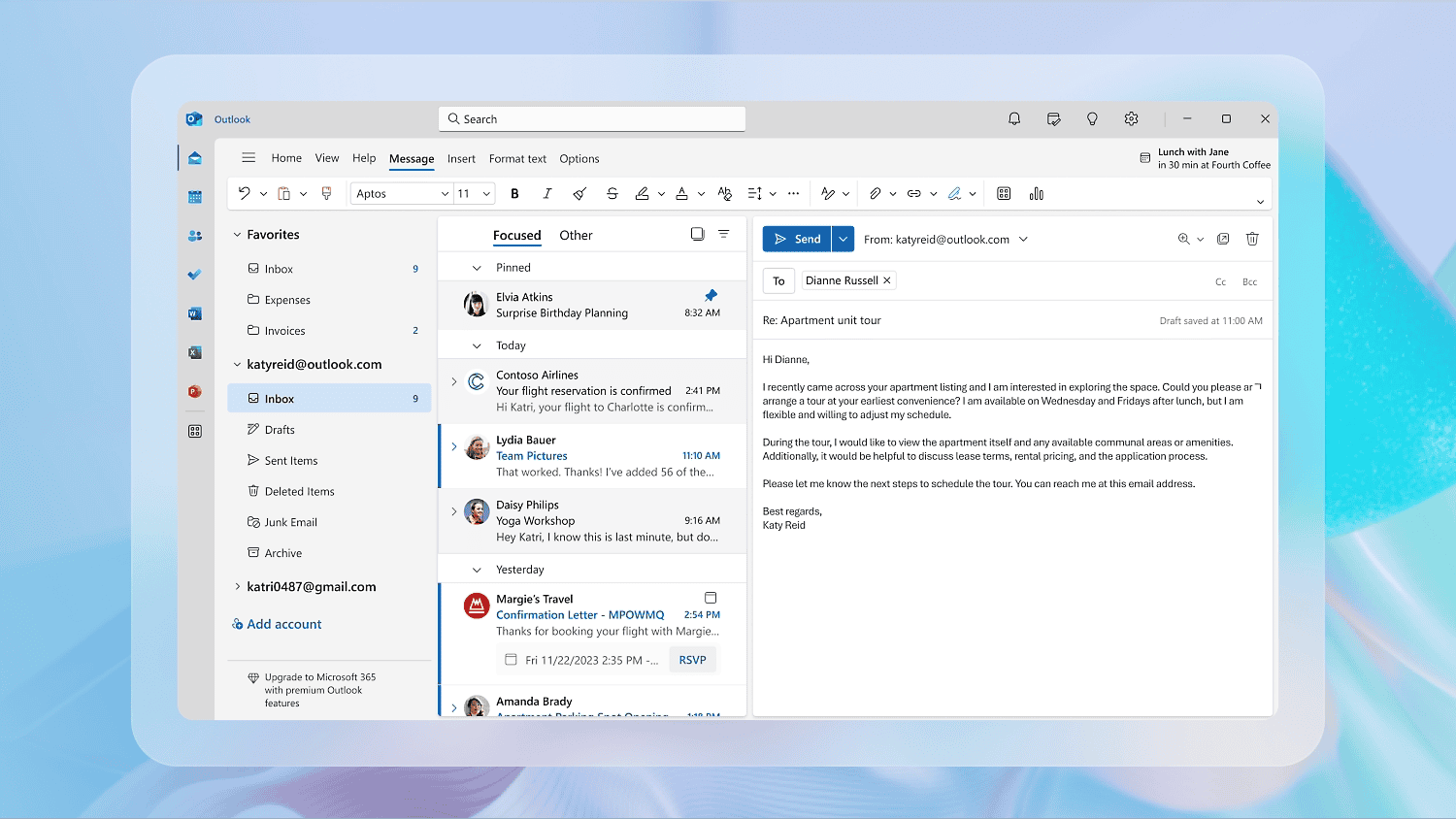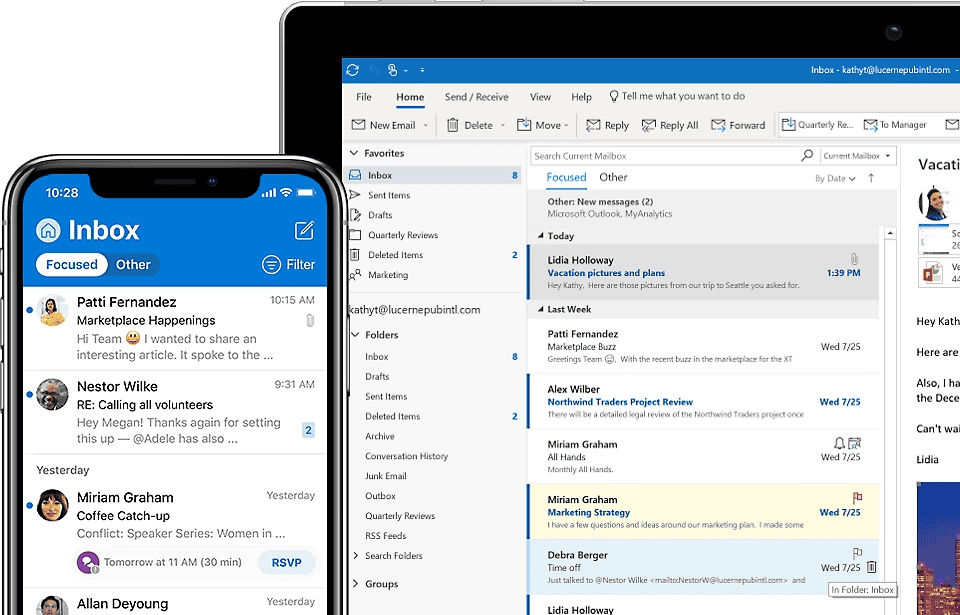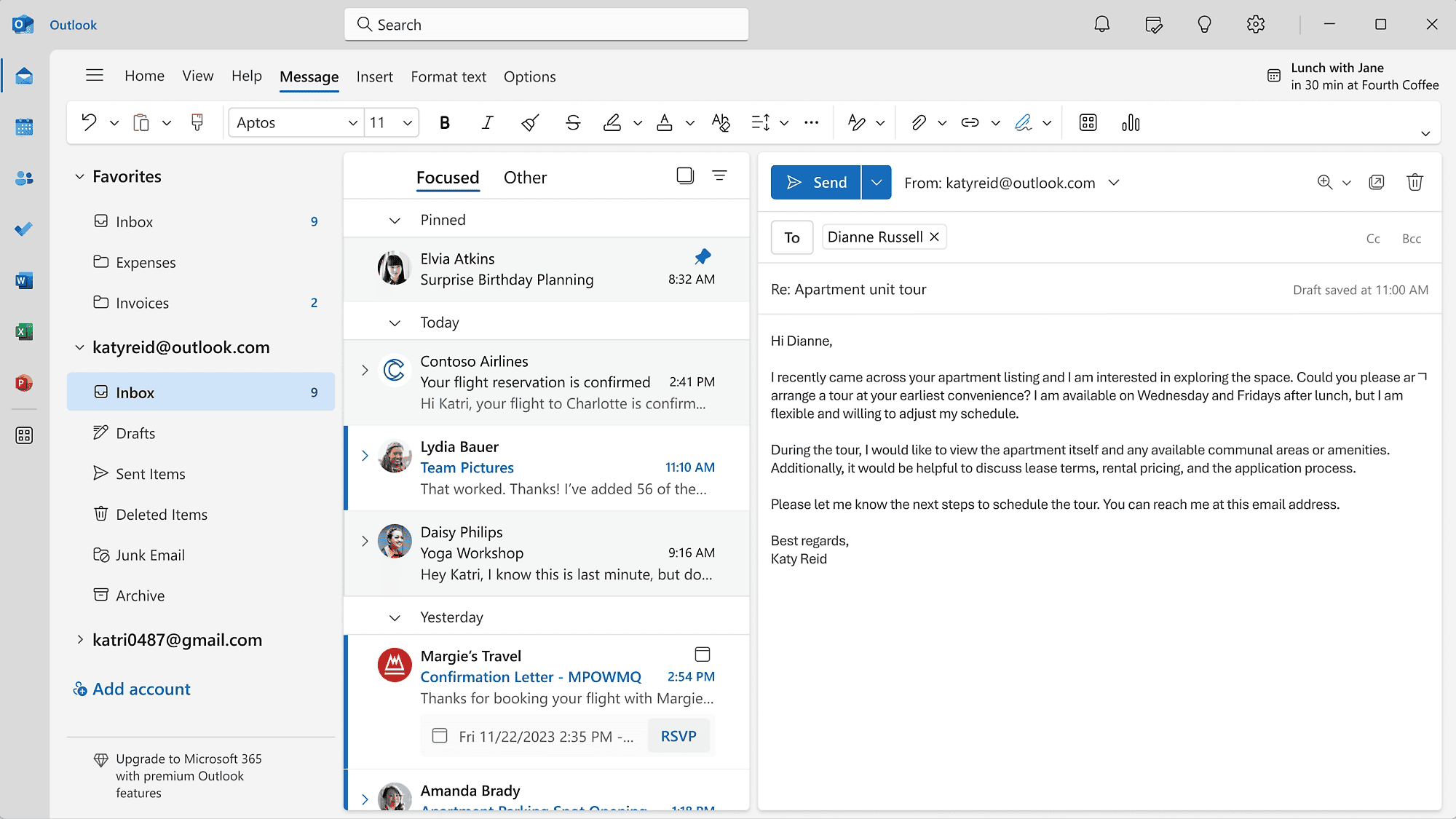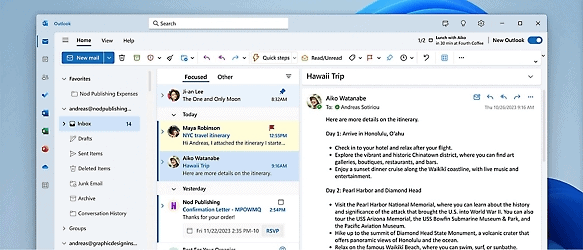Updating your email signature in Outlook can make a big difference in how you present yourself professionally. A good signature adds a personal touch to your messages and gives important contact info. To update your signature in Outlook, go to File > Options > Mail > Signatures and edit your existing signature or create a new one.
You can add things like your name, job title, phone number, and social media links to your signature. Outlook lets you have different signatures for new emails and replies. This helps you keep your full info for new contacts while using a shorter version for ongoing chats.
Updating Your Outlook Email Signature

Having a professional and informative email signature is crucial for making a good impression. In Outlook, updating your signature is a simple process that can be done in a few easy steps.
Steps to Update Your Email Signature in Outlook:
- Open Outlook: Launch the Outlook application on your computer.
- Access the Signature Editor:
- Click on the “File” tab in the top left corner.
- Select “Options” from the left-hand menu.
- In the Outlook Options window, click on “Mail” in the left sidebar.
- Under the “Compose messages” section, click on the “Signatures…” button.
- Edit or Create a New Signature:
- In the Signatures and Stationery window, you’ll see a list of your existing signatures.
- To edit an existing signature, select it from the list and make your changes in the editing pane below.
- To create a new signature, click on the “New” button and give it a name. Then, enter your desired signature content in the editing pane.
- Format Your Signature:
- Use the formatting tools in the editing pane to customize the look of your signature. You can change the font, size, color, and add images or links.
- Set Your Default Signature:
- Under the “Choose default signature” section, select the signature you want to use for new emails and replies/forwards from the respective drop-down menus.
- Save Your Changes:
- Click on the “OK” button to save your changes and close the Signatures and Stationery window.

Additional Tips:
- Keep it concise: A good email signature should be brief and to the point. Include only essential information like your name, title, company, contact details, and website (if applicable).
- Use a professional font: Stick to simple and easy-to-read fonts like Arial, Calibri, or Verdana.
- Add a touch of personality: Consider including a professional headshot or a link to your social media profiles.
- Test your signature: Send a test email to yourself to see how your new signature looks in different email clients and devices.
Key Takeaways
- Updating your Outlook signature takes just a few clicks in the settings
- You can create multiple signatures for different purposes
- A professional signature includes your name, title, and contact details
Preparing Your New Signature
A good email signature helps you look professional and share key details. Here’s how to make one that works well.
Creating a Custom Signature Design
Start by picking a clean, simple layout for your signature. Use a readable font like Arial or Calibri. Keep the size between 10-12 points. Stick to 1-2 colors that match your company’s look.
You can add your company logo if you have one. Make sure it’s small and not too eye-catching. If you want to use a photo, choose a professional headshot.
For a personal touch, you might add a handwritten signature. Scan your signature and save it as an image file. Then insert it into your design.
Remember to keep the whole signature compact. It should be easy to read at a glance.
Including Essential Information
Your signature should have your full name and job title. Include your company name too if it’s not obvious from your email address.
Add your work phone number. If you use different numbers for calls and texts, list both.
Include your business email address, even though it’s already in the “From” field. This makes it easy for people to copy.
You can add your company’s website or your own professional site. Use short, clear links.
Think about adding social media icons if they’re relevant to your work. But don’t overdo it – pick 1-2 key platforms.

Optimizing Signature for Different Platforms
Your signature might look different in various email apps. Test it in the main ones you use, like Outlook for Windows, Mac, or the web version.
For mobile, keep things extra simple. Use fewer lines and smaller images. This helps it load faster and look good on small screens.
If you use Outlook on your phone, you might need a separate mobile signature. The app often can’t show the full desktop version well.
Check how your signature looks in plain text too. Some email systems strip out formatting. Make sure the key info is still clear without any fancy design.
Updating Signature in Outlook
Outlook lets you change your email signature easily. You can update it in the desktop app or on the web. This keeps your contact info current for all your messages.
Changing Signature in Outlook Application
Open Outlook and click File > Options > Mail > Signatures. Pick the signature you want to change. Type your new info in the Edit signature box. You can add text, images, and links here.
Choose when to use this signature. Set it for new messages, replies, or both. You can have different signatures for each email account. When you’re done, click Save and then OK.
For Outlook 2016, 2019, and 2021, the steps are the same. The Signatures and Stationery window is where you make all changes.
Modifying Signature in Outlook on the Web
Go to Outlook.com and sign in. Click the Settings gear icon. Select View all Outlook settings. Go to Mail > Compose and reply. Find the Email signature section.
Type your new signature in the box. You can use the formatting tools to style your text. Choose if you want to use this signature for new messages and replies.
Click Save when you’re done. Your new signature will now show up in your emails. You can make more changes anytime by going back to these settings.

Additional Signature Options and Considerations
Outlook offers several features to customize email signatures for different accounts and message types. Users can set default signatures, ensure security, and apply signatures to replies and forwards.
Setting Default Signatures for Different Accounts
Outlook lets users set up different signatures for each email account. To do this, go to File > Options > Mail > Signatures. Select an email account from the drop-down menu. Choose a signature for new messages and another for replies and forwards. This helps maintain a consistent look for each account.
Users can create multiple signatures and switch between them as needed. For work emails, a formal signature with contact details is ideal. For personal messages, a simpler sign-off might work better. Outlook saves all signatures, making it easy to change them later.
Ensuring Signature Security and Integrity
Keeping email signatures secure is important. Don’t include sensitive info like phone numbers or home addresses in signatures for public use. Use work contact details for professional emails instead.
Be careful when adding images or links to signatures. Make sure they come from trusted sources to avoid security risks. If using company logos, check with IT or marketing teams for approved versions.
Regularly update signatures to keep information current. This helps maintain professionalism and avoids sending outdated details. Consider setting a reminder to review signatures every few months.
Adding Signatures to Replies and Forwards
Outlook can add signatures to replies and forwards automatically. To set this up, go to File > Options > Mail > Signatures. Under “Choose default signature,” pick a signature for replies and forwards.
Users can choose to have no signature, the same signature as new messages, or a different one for replies and forwards. A shorter signature often works well for ongoing conversations. This keeps emails tidy and avoids repeating information.
Remember, signatures can be turned off for individual messages if needed. Just click the Signature button in the Include group when composing an email and select None.
FAQs
How do I add an image to my Outlook signature?
In the signature editor, click on the “Image” icon and select the image you want to add. Make sure the image size is appropriate and doesn’t make your signature too large.
Can I have multiple signatures in Outlook?
Yes, you can create multiple signatures in Outlook and choose which one to use for different emails.
How do I change the font in my Outlook signature?
Highlight the text you want to change and use the font formatting tools in the signature editor to select a different font, size, and color.
My Outlook signature is not showing up. What should I do?
Make sure you have set a default signature in the Signatures and Stationery window. If the problem persists, try restarting Outlook or repairing your Outlook installation.
Can I use HTML in my Outlook signature?
Yes, you can use basic HTML tags to format your Outlook signature. However, be cautious as some email clients may not render HTML correctly.







